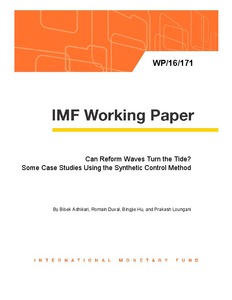Can reform waves turn the tide? Some case studies using the synthetic control method
"A number of advanced economies carried out a sequence of extensive reforms of their labor and product markets in the 1990s and early 2000s. Using the Synthetic Control Method (SCM), this paper implements six case studies of well-known waves of reforms, those of New Zealand, Australia, Denmark,...
| Main Authors: | , , , |
|---|---|
| Institution: | ETUI-European Trade Union Institute |
| Format: | TEXT |
| Language: | English |
| Published: |
Washington, DC
2016
IMF |
| Subjects: | |
| Online Access: | https://www.labourline.org/KENTIKA-19101464124919296469-Can-reform-waves-turn-the-tide.htm |
| Summary: | "A number of advanced economies carried out a sequence of extensive reforms of their labor and product markets in the 1990s and early 2000s. Using the Synthetic Control Method (SCM), this paper implements six case studies of well-known waves of reforms, those of New Zealand, Australia, Denmark, Ireland and Netherlands in the 1990s, and the labor market reforms in Germany in the early 2000s. In four of the six cases, GDP per capita was higher than in the control group as a result of the reforms. No difference between the treated country and its synthetic counterpart could be found in the cases of Denmark and New Zealand, which in the latter case may have partly reflected the implementation of reforms under particularly weak macroeconomic conditions. Overall, also factoring in the limitations of the SCM in this context, the results are suggestive of a positive but heterogenous effect of reform waves on GDP per capita." |
|---|---|
| Physical Description: | 34 p. Digital |

